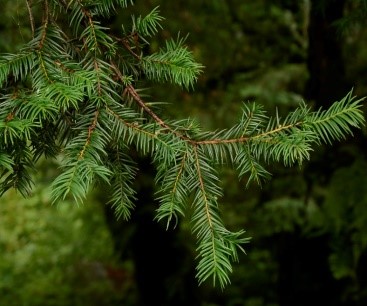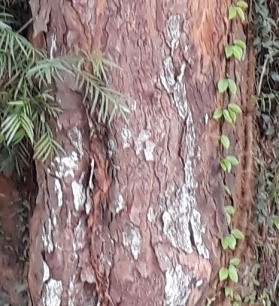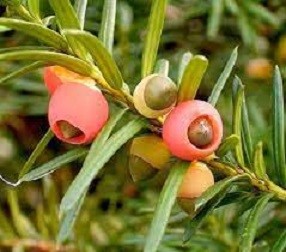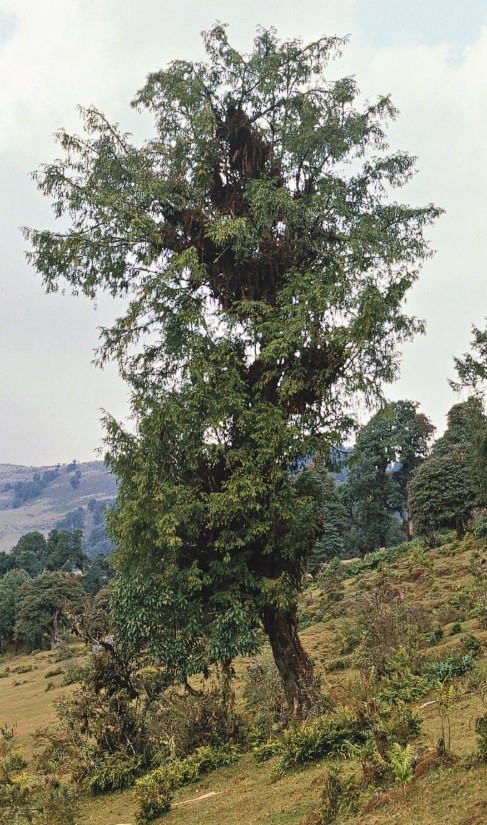Trees
Taxus wallichiana Zucc.
Taxus wallichiana Zucc.
Description :
This plant is a medium-sized evergreen coniferous tree growing up to the
height of about 10 m. The shoots of the plant are green at first, becoming
brown after 3 to 4 years. The leaves are slightly falcate, thin and are 1.5 to
3 cm long and 2 mm wide, having soft mucronate apex; they are spirally arranged
on the shoots but twisted at the base. It is dioecious which means male and
female cones are present on separate plants; the seed cone has berry-like shape
with a single scale developing into a soft, juicy red aril 1cm diameter,
containing a single dark brown seed of about 5 to 8 mm long. The pollen cones
are globose and are 4 mm diameter,
Distribution :
This plant is native to the Himalayan regions and
parts of south-east Asia including Afghanistan, Pakistan, India, Burma,
Indonesia and Philippines. It can be found at the elevation of 1800‑3000m. The species
favours a reasonably wide range of habitats, growing on mountains and in
temperate, warm temperate forests.
Uses :
The wood is flexible and in ancient times
was used for making of bows. The tree has medicinal use in Tibetan and Ayurveda
medicine. People in Himalayan regions use
the stem bark of the tree to make special tea. The leaves and fruits are
antispasmodic, aphrodisiac, emmenagogue and sedative and are used in the
treatment of asthma, bronchitis hiccough, epilepsy and indigestion Traditional
medicine has made use of young shoots and leaves and sometimes of inner bark
for a long time in various potions, tinctures, and pastes Local community uses
its wood as fuel. The wood is durable and strong. It is used for door frames,
cabinet work and wood turning and wood inlaying, also for candlesticks, knife
handles etc. Less refined products are gates and fences, poles, struts and
'wattle and daub' in walls of rural buildings.
(Juyal
et al., 2014)



